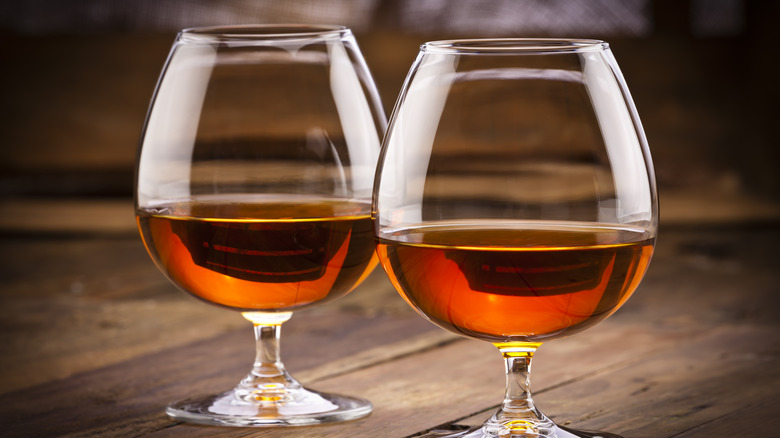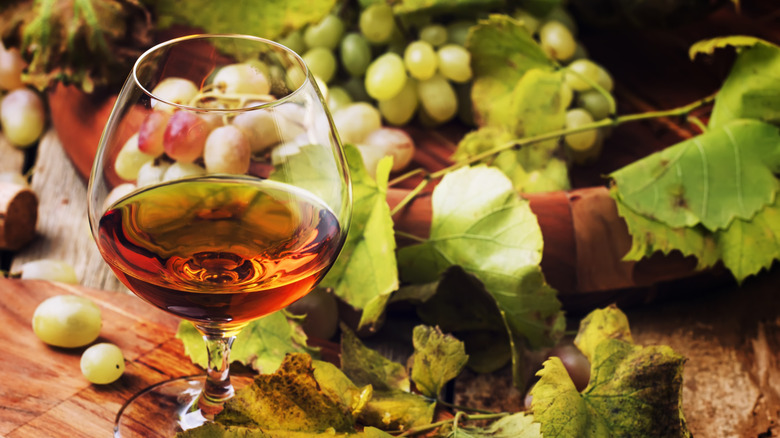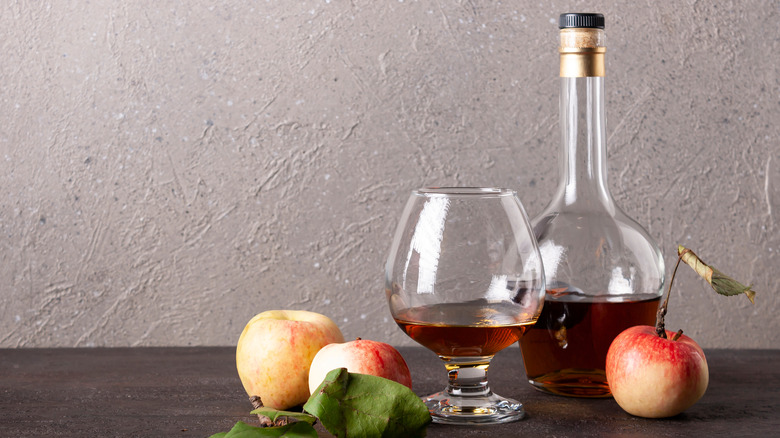Yes, Cognac And Brandy Actually Are Different
When perusing the drinks menu at a high-end bar or restaurant, you may be perplexed once you reach the brandy section. Brandy, Cognac, Applejack, Pisco, Calvados... what's the difference? While brandy and Cognac are two of the best-known options on the menu, and their names are often used interchangeably, they are quite different. Think of their differences, like the distinction between prosecco and champagne, or more specifically, like whiskey versus bourbon — one has a stricter definition than the other.
Brandy is a broad category that includes any spirit distilled from fermented fruit juice, including cognac, Pisco, Applejack, Calvados, Armagnac, grappa, kirsch, and many more. Cognac is a subcategory of brandy, which is required to adhere to specific production guidelines, including being made from grapes from the Cognac region of France. Knowing these distinctions can help you select the perfect accompaniment the next time you find yourself at the bar.
What sets Cognac apart
Just like French wines like Bordeaux and Champagne, as well as cheeses like Roquefort, Cognac adheres to a rigorous set of Appellation d'Origine Contrôlée (AOC) standards, which dictates the region of origin as well as the way a product is produced. To bear the name Cognac, a spirit must be made with white grapes grown in the Cognac region, specifically Ugni Blanc, Folle Blanc, and Colombard. Next, Cognac is distilled twice in copper stills, and then aged for at least two years in barrels made from either Limousin or Tronçais oak. This is not to be confused with vermouth, which is a fortified wine that is not distilled.
Although AOC rules ensure continuity within the Cognac category, there is still a large amount of diversity to sample. Within the Cognac region, different grapes and soils can impact the flavor of the finished products. Additionally, aging increases the complexity and smoothness of Cognac. This too comes with naming standards –VS (Very Special) is aged at least two years, VSOP (Very Superior Old Pale) is aged for at least four, and XO (Extra Old) is aged at least six years, but often many more. No matter its age, you can expect Cognac to be strong, with fruity notes upfront and more complex, woody notes to finish. This spirit can be enjoyed neat, on the rocks, or as part of a cocktail like a sidecar, sazerac, or old-fashioned.
Branching out with brandy
If you've developed a taste for Cognac or if you're curious to explore beyond it, there's a wide world of brandy to discover. The word brandy comes from the Dutch word for "burned wine," brandewijn. This fruit-based spirit has been enjoyed for ages all around the world, but it has a particularly interesting history in the U.S., where apple brandy was made as early as the 1700s. Laird's, which still makes Applejack today, is the oldest licensed distillery domestically.
Outside the U.S., there are countless brandy varieties to enjoy, including cherry-based kirsch from Germany, Calvados from Normandy, France, Armagnac from southwest France, Peruvian Pisco, and Italian grappa. Each type of brandy brings unique ingredients and distilling traditions, making each sip distinct. Just like Cognac, these spirits are also versatile. Whether you enjoy them straight or as part of a craft cocktail, the range of them are worth sipping into.


